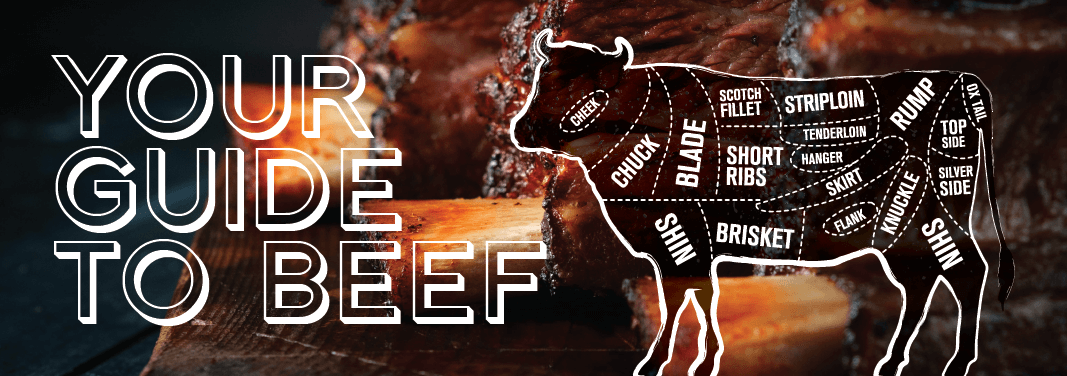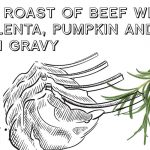Your Guide to Beef

Chuck
Chuck is a well-used area of beef and contains a lot of connective tissue. With a balance of meet and fat, the chuck offers ribs, roasts and steaks, and suits a range of cooking methods. It is perfect for curries and casseroles with great flavour and a fantastic gelatinous texture.
Blade
From the shoulder region of the cow, the blade accounts for approximately 5% of the carcase. It is a versatile cut containing several muscles with layers of fat and connective tissue – this cut performs well as a slow braise or roast.
Shin
The shin is a well exercised muscle with little fat and abundant connective tissue. ‘Bone-in’ is often cut across the bone into osso-bucco, whilst boneless shin is prepared from either the shin area or the heel muscle in the silverside. Shin suits low, slow cooking to allow the connective tissue to tenderise while enriching with flavour.
Scotch Fillet
A low working muscle out of the forequarter, the scotch fillet is very tender and succulent. A boneless rib roast that is sliced is the ultimate cut with the best balance of flavour, tenderness and juiciness. When left on the bone, it creates the ideal rib roast, perfect for a Sunday lunch.
Short Rib
Short ribs are taken from the forequarter after the brisket is removed. They are full of flavour and fall-off-the-bone tender, however they are also available to purchase as a boneless cut. Grill or slow roast for a succulent beef dish.
Brisket
There are two briskets per animal accounting for around 7% of the carcase. Derived from the underside of the chest area, brisket is a well exercised muscle that is best suited to low and slow cooking such as braising or stewing.
Striploin
The striploin comes from an area of less work meaning it is tender and full of flavour. The sirloin and t-bone are cuts derived from the striploin with little to no fat.
Tenderloin
A long lean muscle, this is the most tender cut of beef available. The tenderloin is the source of tenderloin steaks and filet mignon, and is a component of the t-bone and scotch fillet steaks.
Hanger
Also known as the thick skirt, there is only one ‘hanger cut’ per animal. While it isn’t an overly tender cut, it has great favour and is best cooked quickly over high heat.
Skirt
Skirt steaks are versatile and have a great beef taste. This cut need to be sliced thick against the grain before serving to ensure maximum tenderness.
Flank
This is a long flat steak taken from a single muscle beneath the loin in the abdominal area. This cut is perfect for stir-frying when sliced thin or can be slow cooked and shredded with a fork to add to salads or sliders.
Rump
The rump is a boneless cut that sits between the sirloin and topside. The rump is a versatile and affordable cut that can be made into roasts or steaks. It is a cut of beef that is perfect for any occasion.
Knuckle
The knuckle consists of three muscles. The eye of knuckle is the lean, weight-bearing muscle with little connective tissue. Used for roasting or preparing further into medallions, it produces a notably tender result when slow-cooking.
Topside
The topside come from the inside of the hind leg. Topside is very lean and performs best when diced for slow cooking in a casserole or stew.
Silver Side
Silverside is made from five muscles that a cow uses heavily for walking. This cut requires slow cooking or corning to produce a tender and delicious beef dish.
Ox Tail
This cut starts at the base of the spine. The Ox Tail tastes best when slow cooked as it brings out a robust, full bodied flavour that is beautifully tender.




